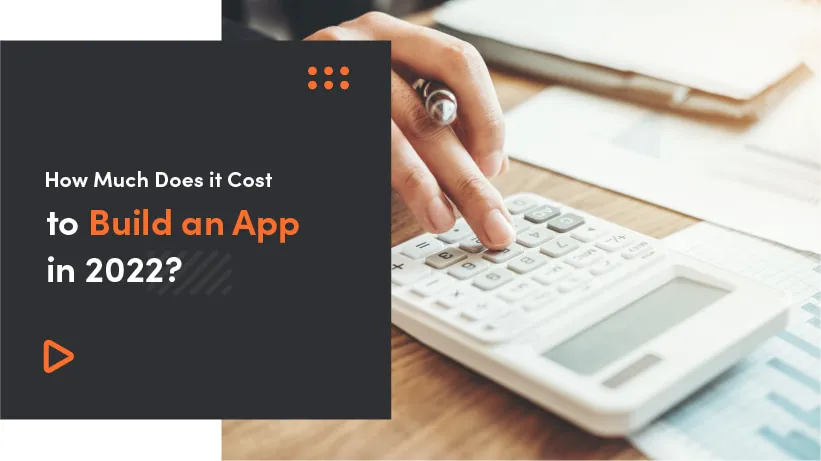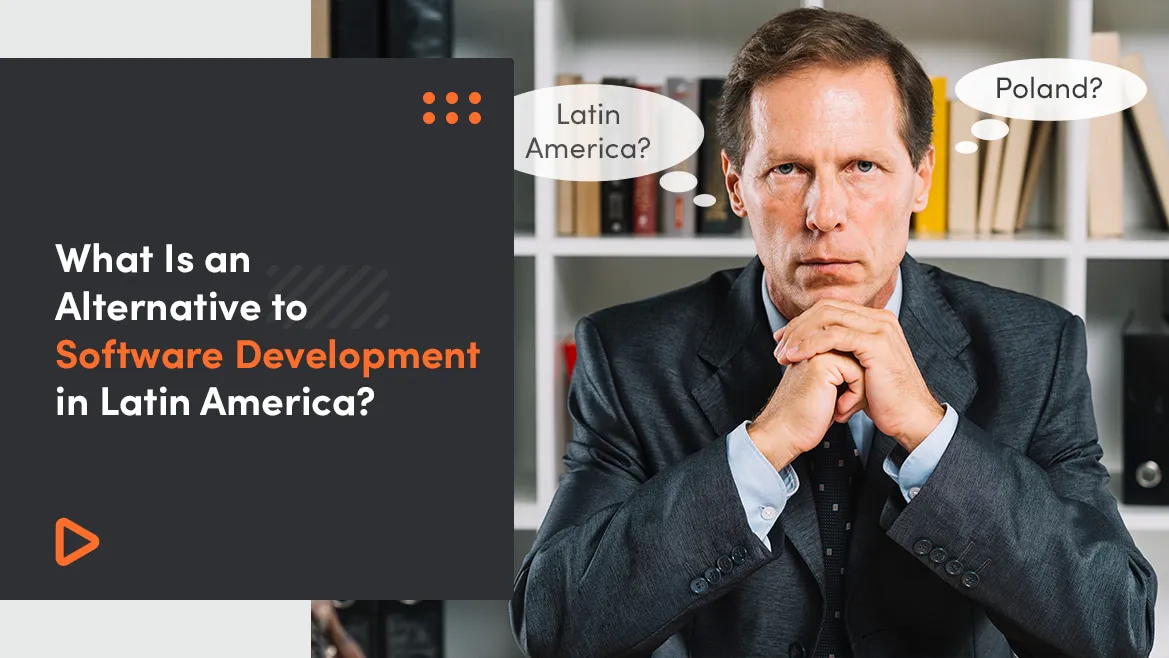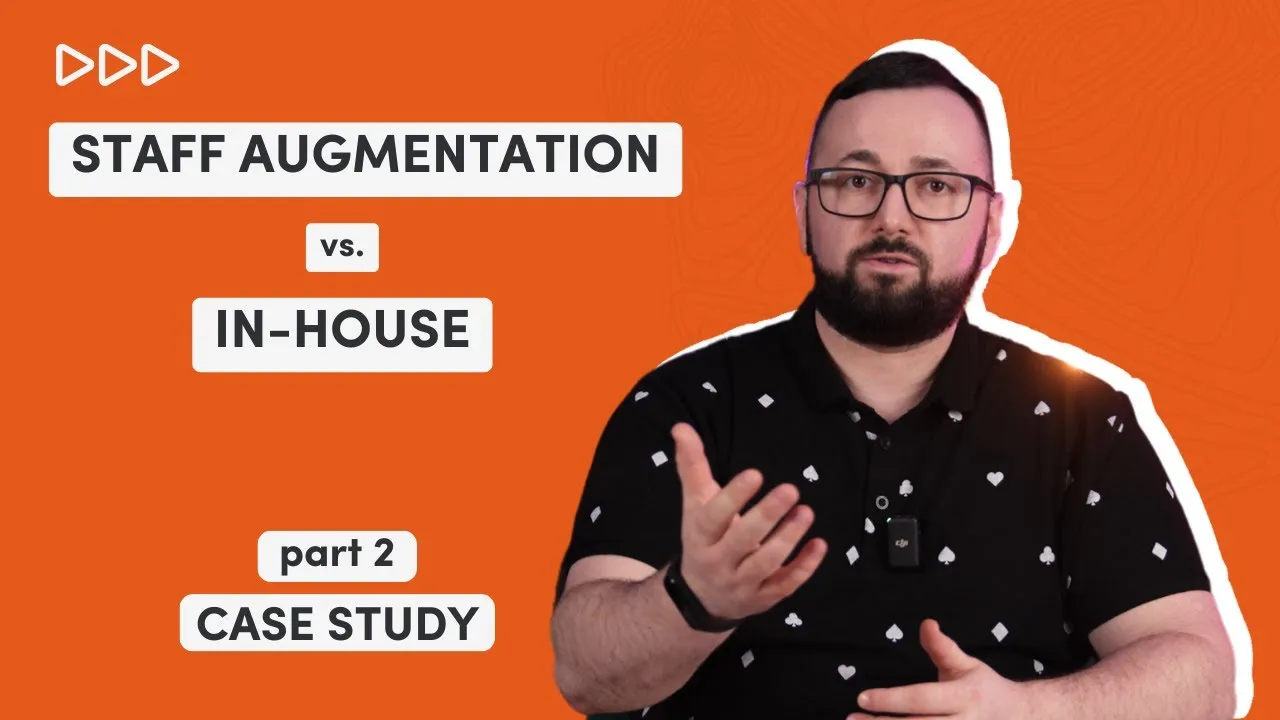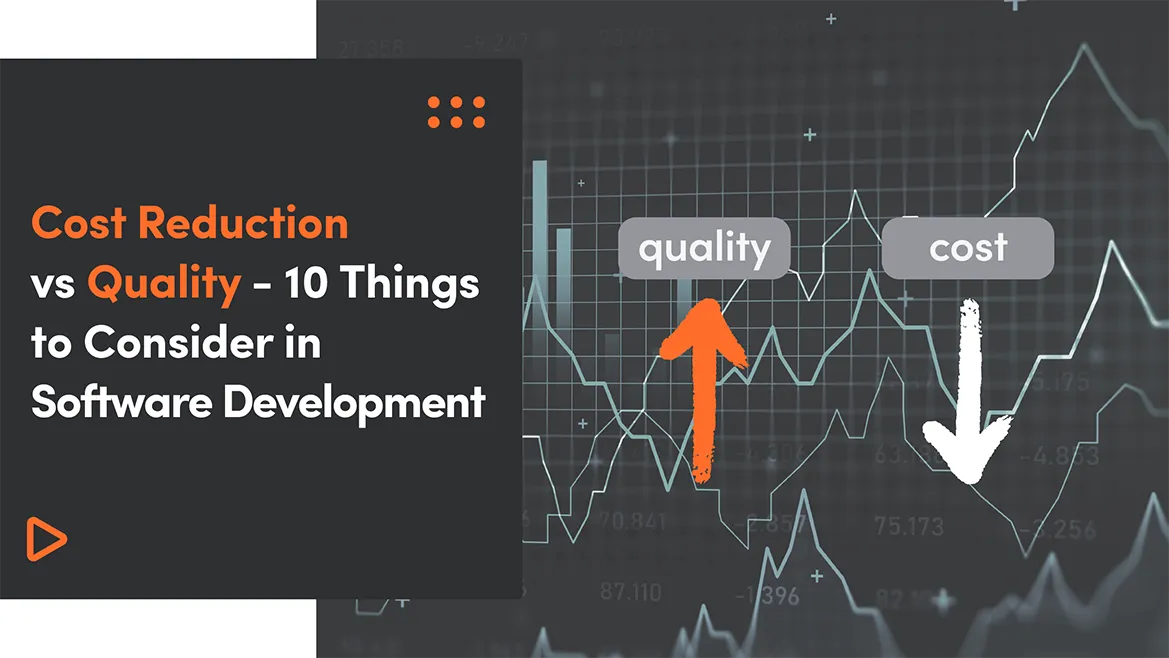Building an app in 2022 is… pretty costly. It can cost as much as $137,000 for a sophisticated app or even $50,000-$70,000 for a standard app. This remains the same for both mobile and web applications.
Don’t get us wrong. This price range can be hugely broad, and there are multiple steps you can take to bring the cost down throughout the process. They are going to be pretty crucial to the point where they can make or break your entire business.
One thing some startup founders have begun to do is to outsource their development work, especially in the early stages including the MVP. Read on to find out how that could benefit you, and how you can get started with Selleo.
Why do Startups Fail?

If you want to bring in a new business or impress your previous customers, building a top-quality mobile or web app is one surefire way to do this.
An app can give a better representation of your business idea, it can help your current customers make the most out of your company and it can attract potential new customers in ways that a simple website can not.
It appears to be the case that some startup founders have not recognised this over the years, and this has led to the failure of their entire startup businesses. Here are a few reasons why some app development projects have failed:
- Poor design and development: strangely, some startup founders fail to recognise the importance of ensuring a high quality UX/UI design, logo and functionality for their app. As a result, they don’t deliver an excellent product if they even deliver one at all, and this makes them look unprofessional when compared to the competition. Furthermore, if you’re looking to sell the app on the market, the top quality product is a must
- Missing out on the target audience: you could have the best app in the world but if it fails to align with the target audience of your startup as a whole, you’re going to miss out on the level of engagement you’ll need to drive your business forwards.
- App development spendings: on the other end of the spectrum, some startup founders will spend way too much on developing their app and this will be the final nail in the coffin for their business. Failure to budget correctly, and putting too much money into the wrong places can be deadly for any startup.
- Number of features: your app might look beautiful, but if it fails to provide the level of functionality needed to drive engagement, nobody will buy it. Since selling the app is your ultimate goal, this part of the development process needs to be planned with special care.
- Development time: Getting your completed app over the line within a certain amount of time is also important to its success. If you spend too much time creating an app, your competitors’ apps may get better quicker, and this can leave you in the dark. On top of this, time is money and that’s the fact you need to remember.
- Failure to build an MVP: an often overlooked part of the development process of an app is something called a Minimum Viable Product, or MVP for short. This is actually a much more important stage than a lot of people give it credit for, so let’s take a closer look into what it means and how to create one.
What is a Minimum Viable Product and Why Should You Build One?
Having an idea for an app is part one, of course. A lot of people think that part two is building it, but there is one key stage that should come before this, and it is building a Minimum Viable Product.
This is the part where you find out whether your idea is feasible or not. A lot of app developments have been closed down at this stage, and it’s super important for this to happen early if it is going to happen at all to avoid wasting cash.
An MVP is a product with the minimum number of features to function. You can build on it and add more later on. All you need your MVP to be is a basic tool that users can give feedback on early.
That feedback is the number one reason you should build an MVP. Having it early rather than when you have finished a full draft of your final app product has the following benefits:
- Saves time and money: any problems that arise at an early stage can be much more easily removed than if they are spotted later down the line. This could be something small, such as a visual issue, or something more deep-routed into the functionality of the app.
- Flags up potential terminal issues: in a more serious circumstance, it could be decided that the ‘Minimum Viable Product’ isn’t viable at all, so you may even have to cut the whole project. This is going to be much less expensive at stage one than if the app has been fully developed.
- Helps to improve the final product: even if things do go really well with the MVP, there is a high chance that somebody will have a great idea for the final product that you did not consider yourself. This is especially true if you decide to outsource MVP development.

How Much Does it Cost to Create an App Worldwide?
We’ve detailed how important it is to actually have an app right now, and mentioned that it can be one of the most costly parts of the entire development of your business, but how much exactly does an app cost worldwide in the year of 2022?
Let’s not understate things right now: budgeting to create an app can be quite an arduous experience that requires a lot of patience. However, the success of your business depends on your ability to do this effectively.
A ‘typical’ app can be made within a budget of $50k to $70k and could take 4.5 weeks. However, a more ‘sophisticated’ app could cost up to $137k and would take as many as 26 weeks.
Unfortunately, this information is not hugely helpful. While it does give a very rough idea as to what an app development cost is, there are so many variables at play. Consequently, your app price could very well end up nowhere near either of these figures.
So, what do we need to consider when we try to deliver our first app development budget? There are quite a few things, as you may have expected. We recommend looking into each of the following before you get started:
- Features and functionality
- Mobile, web or both?
- Complexity
- UX & UI
- Maintenance
- Security
- Number of pages
- The location of your team and your customers
A great way to begin to figure out your budget in real terms is by starting at the beginning, with an MVP. Developing your MVP will help you to get a much clearer idea of what your answers to the criteria we just detailed are.
So, now we can break things down a little bit. Let’s build an MVP, and figure out how much that part is going to cost.
How Much Should Your MVP Cost?

The bottom line is: building an MVP is a lot less expensive than the overall cost of product development. In fact, the MVP development cost should only be a drop in the ocean when compared to the rest of the process.
Let’s take a look at a few of the costs that are likely to arise when you create your MVP, and what you can do to minimise them. Even though the MVP is partially about saving you money in the first place, we should still be looking to save money further as we create it.
The design costs are always going to be in line with the structure of your app. So, try to cross-reference these structural principles with the criteria we listed in the section above to build an idea of cost for the MVP:
- Analysis: research time. Who is your target audience and how are you going to make the best possible product for them?
- Wireframing: this refers to the overall layout of a mobile or web app and elements that will appear on the key pages. It’s basically a first look at the overall skeletal framework of the app.
- Preparing UX design: how is your app going to look in terms of its user interfaces? How much time and money would you need to put into the visual aesthetics? What functions does the app have that requires a bit more than basic UX design work?
- Mockup: page by page, an MVP includes a first look at what the final pages of the app will look like.
- Interaction between pages: next to those mockups, you’ll need to consider how the pages work alongside one another. This part is often overlooked and can prove costly if not adequately budgeted for initially.
- Testing: now that we’ve been through the four key stages of development, it’s time to do some testing and see how everything holds up under the scrutinous eye of the user.
Factors to Consider when Building an MVP
Here are the three overriding factors that influence the final cost of building your MVP
- Business: analysis, sales and marketing.
- Technical: backend development, testing and more.
- Design: user experience, interface and other aesthetics, motion work.
What Influences the MVP Development Cost?
Now that we’ve had a good look at all of the parts of the process to build our MVP, let’s check out the influencing factors of that process. The better you control this part, the lower your overall cost will be.

- Number of features: must have, should have, could have, won’t have. These are the four categories for any potential features you are considering so that you can decide whether they are worth implementing in the final product or not. This is a categorisation methodology called the Moscow method.
- Development type: how are you going to build the MVP? Are you going to hire a project manager and full time, in-house developers? Or are you going to outsource the work to save on time and money?
- Technology stack: consider which pre-existing apps and technologies you would like to use in your own tech stack. These can include open source code which really helps to bring the overall price down.
- Time frame: while you want to make sure that you get your MVP out as soon as possible, you should make sure not to underestimate the time frame of it as this can cause all sorts of problems later down the line.
MVP Building Explained - The Important Decisions to Make

Now let’s look at some more specifics of MVP development costs - based on the decisions you make.
1: The Development Strategy
How you develop your MVP is very important. You’ve basically got three options to pick from:
- In-house development: if you have a solid team of in-house developers already then great. But consider the question: is there enough manpower, quality and varied skill sets among them to be able to execute the project to the time frame and quality you are looking for? If not, you may need to hire more people.
- Freelance development: instead of hiring someone new altogether, you could always look at a freelancer or two. However, this can prove quite costly indeed.
- Outsourced development: perhaps the easier and most affordable method for most startup owners is simply to outsource the work to a pre-existing software development team who can get the job done quickly and efficiently for the best price.
You can always mix and match parts of this, it’s not set in stone.
2: Pricing Model
Fixed Price: the cost here is not influenced by the amount of time spent or resources used.
- Pros and cons: easier to plan an initial budget but almost certainly harder to finance. It can also have a negative impact on the overall quality of the final product. May be easier to use but more expensive in the long term.
- When to use: if you have a high budget and a clear idea of the project.
Time and material: the costs are based on time and resources.
- Pros and cons: more flexible to new ideas but more difficult to budget for. Faster, and more dynamic, but may be uncertain in terms of the final finishing time.
- When to use: more versatile projects where you can afford to be a little bit more flexible with your time and budget.
3: Post Launch Costs
Finishing the work with your MVP shouldn’t be where you stop. Some businesses choose to continue the collaboration with software houses to ensure proper functioning of the app. There are also actually quite a few factors that go into the post-build part that we need to think about before declaring our final budget. They look a bit like this:
- Marketing and advertising: how are you going to get your first batch of customers to bring about that all important feedback round? You should promote your product as soon as possible and consider the likes of Facebook and Google ads, email newsletters and social media posts to make that happen.
- Sales: after testing, where are you going to sell your products? Getting the MVP into the right channels can make or break its success, so pay close attention to this strategy.
- Maintenance: after the MVP is done and dusted, you’re still going to need to pay money into it regularly to ensure that it is well looked after. This includes fixing any bugs within the app or updating it to incorporate new features as the app goes through the development process.
Summary
If you reach out to a software development team with a few ideas about your app, they will come back with a quote for the work. This is easier to budget on, and is likely to be a lot less expensive than a tonne of software developers hired in-house.
This outsourcing can take a huge weight off of the shoulders of any startup founder and the overall product could not only be the difference between a good one or a great one, but it could even be the difference between a successful and failed business.
Check out a software development outsourcing team with a bunch of great case studies to their name that will prove to you how helpful they can be to your own project. At Selleo, we have plenty of satisfied clients.
Reach out for a consultation today to find out more about the costs, time frame and more so that you can compare them against any other potential options you have on your radar.




